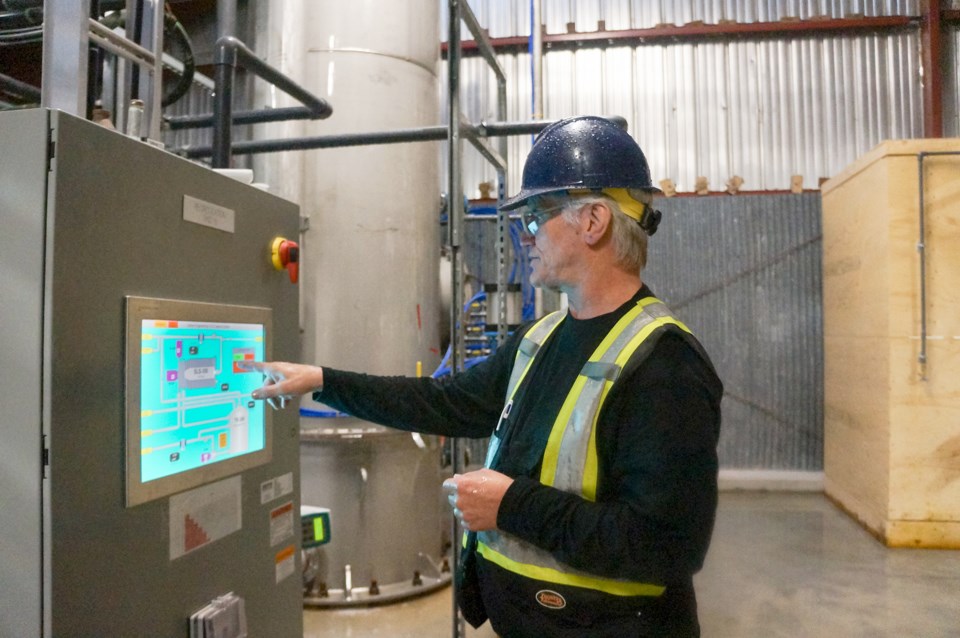Squamish chemical engineer Doug Olmstead says he could never have guessed how things would turn out.
Fifteen years ago he was hired to work on the remediation of the Nexen Lands, which were heavily polluted by decades of industrial activity on the site including the former Nexen chlor-alkali plant.
On Monday afternoon, he was standing on the same land as a site manager for Carbon Engineering explaining the world’s first $8 million carbon dioxide reclamation pilot plant that is soon to be fully operational in the big blue barn – a former Nexen building.
Basically, the technology inside the barn will take carbon dioxide out of the atmosphere and scrub it clean.
“We are the first demonstration plant to take the carbon dioxide directly out of the air,” Olmstead explained.
Other facilities have been able to take carbon out of air from things like coal fire generators, he said, where the concentration is much higher.
The Squamish plant takes carbon dioxide out of air that is only four hundred parts per million.
About 13 employees work at the site and four co-op students are involved.
There are three parts to the process that take place in the blue building, according to Olmstead. First, an air contactor uses potassium hydroxide to absorb carbon dioxide out of the air and puts it into a liquid solution of potassium carbonate. Second, lime is used to convert the carbon dioxide in the solution to pellets of calcium carbonate in the pellet reactor (the tall thin silver stack that sticks out of the blue building), and those carbon dioxide pellets are then harvested out of the reactor. Third, the fluidized bed calciner (a steel cylinder inside a heated furnace) heats the calcium carbonate pellets up to about 900 degrees Celsius, thus releasing the pure carbon dioxide.
The potassium hydroxide and lime can then be used again.
“Everything is recycled around and around,” Olmstead said. “The only difference is the carbon dioxide goes into the front in very low concentrations and comes out the calciner as virtually pure carbon dioxide.”
The whole idea of this test plant is that it is big enough that the numbers that come out of the research can eventually be directly scaled up to a full scale, commercially viable plant, Olmstead said.
To be viable, a commercial plant would have to be at least 100 times larger than the pilot plant.
The current plant has a capacity of one tonne of carbon dioxide per day, while a commercial plant would have to have a capacity of at least 100 tonnes a day, according to Olmstead.
The carbon dioxide itself can be sold as a commodity, but what Carbon Engineering would like to do as the next stage is to produce a synthetic “gasoline type” fuel.
“The advantage of that is that fuel doesn’t have a carbon footprint,” he said. “It becomes, in essence, zero-footprint fuel.”
Fuel won’t become a reality for a while, Olmstead said, but a small-scale add-on to the current facility is possible.
Out of the expanded Squamish facility, enough fuel could theoretically be produced to run the Squamish transit system, he said.
But for now, the plant is a scientific research project funded by private investors, including Microsoft founder Bill Gates and Calgary oilman Murray Edwards. There is, so far, no money being made, said Olmstead. “Direct profit from this isn’t going to happen, but what it can build into – we will be the only ones that have gone this far,” he said. For more information on the project go to carbonengineering.com.



